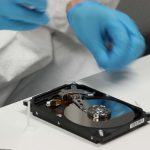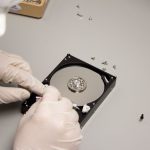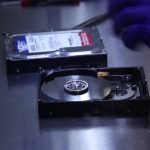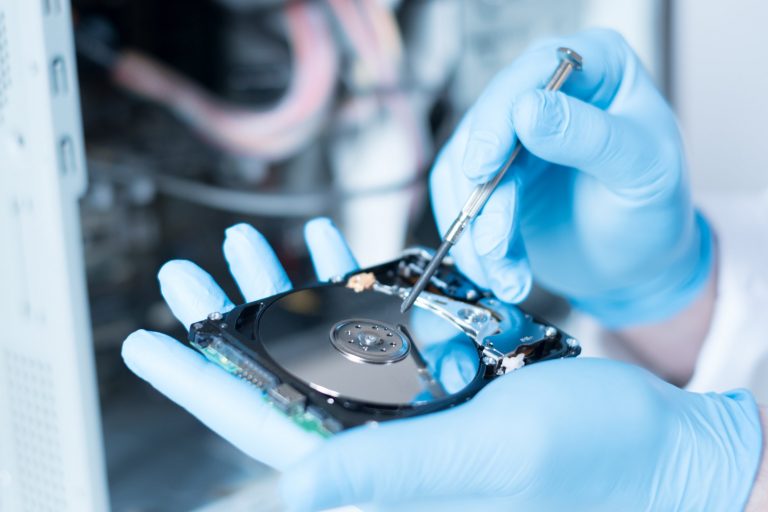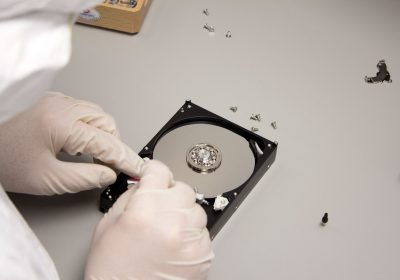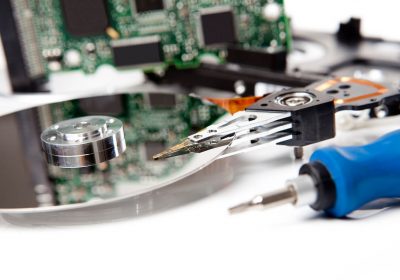As every summer data recovery laboratory sees an increase in the number of breakdowns due to high temperatures and voltage peaks. Today we tell you in a basic way how these two factors affect hard drives -heat and overvoltage-, hoping to avoid some summer displeasure of data loss through simple prevention measures, such as not leaving the computer in a car in full sun, or disconnecting the plugs in case of a storm.
Your hard drive and the heat :
The hard drive is affected by heat in two ways: by overheating and by possible sudden changes in temperature. The breakdowns will be caused by the expansion of the mechanical parts when heated excessively, by their subsequent contraction when passing from heat to cold (or the opposite process when going from cold to heat), as well as by the possible condensation caused inside the disc by rapidly varying its temperature.
But how much is “too hot” for a hard drive? What temperature is it set at when in operation? Do you know what the recommended temperature range is for your disk? If you are curious to know the specific Data Recovery of your device, you will find them in the manufacturer’s specifications, although we already anticipate that in general, the maximum acceptable temperature for a disk that is working is 55 ° C, and in some models up to 60 ° C.
As for the temperature being off (non-operating temperature), the maximum acceptable limit rises to 70°C. Although they may seem very high limits, these temperatures are much lower than those that other computer components can support, for example video boards or processors.

So what is the ideal operating temperature for hard drives? It is a controversial topic, although various reports and forums place the ideal range between 25 and 40°C. What temperature is your disk at while reading this blog? If you want, you can find out with which reads the disk’s temperature sensors and informs you of their evolution, so you can take action if necessary.
Effects of heat and sudden changes in temperature :
A very high temperature can cause the ventilation system to not cool enough and the discs to overheat. In modern computers, this drawback is usually minimized by a good design of the ventilation Twitter system; the biggest problems can arise if the computer is subjected to sudden changes in temperature.
For example, when we have a portable computer that moves frequently between the house, the car and the office, the temperature changes are continuous. If we leave the car in the sun, an outside temperature of 35 degrees Celsius can cause more than 60 degrees inside the vehicle. As if that were not enough, in addition to the high temperature there is an added aggravating factor: how fast it heats up. Anyone knows that the car becomes an “oven” after being parked in full sun for hours; what is not so obvious, as some studies highlight, is that the interior of a car in full sun can rise on average about 20 degrees Celsius, in just one hour.
More Stories
Data Recovery Services Is Best For Stolen Phone
First install Android Data Recovery Services on your computer and run it. Connect your Android device and select “Recover” from all the options. You...
Best Data Recovery Services External Hard Drive
You may have had the traumatic experience of a hard drive or computer crashing, or even worse, being stolen, with...
Why Data Recovery Services Right Away?
There are several kinds of backups in real life, which are designed to get us out of various critical situations:...
Backing Up And Data Recovery In Salesforce
Given the solutions Salesforce offers to effectively manage your customer and partner data, it's no wonder it's number one in...
Ways To Data Recovery Services From Dead Phone
One of the best ways to Data Recovery Services from a dead phone is to use a backup. If you have...
What To Do In Case Of Data Recovery Services Loss?
You risk aggravating the damage by trying to fix errors yourself after data loss. If you suspect that your data...



